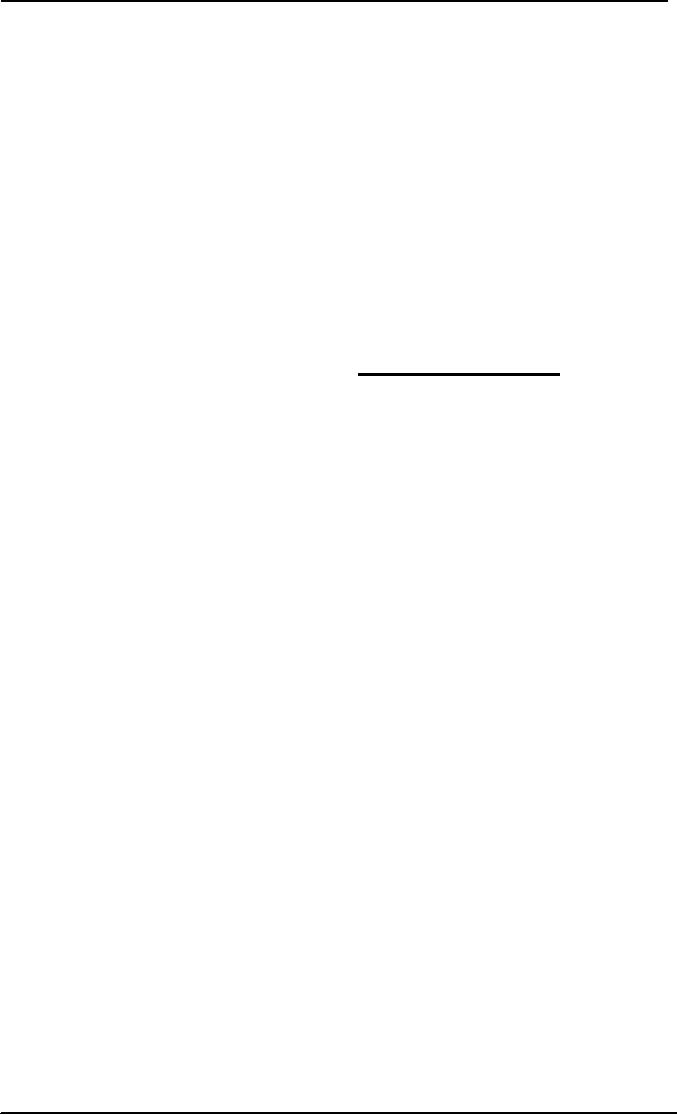 |
MARKET MECHANICS |
| << Blue Chip Stocks, Income Stock, Cyclical Stocks, Defensive Stocks |
| FUNDAMENTAL STOCK ANALYSIS >> |

Investment
Analysis & Portfolio Management
(FIN630)
VU
Lesson
# 5
MARKET
MECHANICS
TYPES
OF ACCOUNTS:
People
who buy or sell stock
through a brokerage firm have an
individual account in
which
they
make their trades. While a single
account number is associated
with each investor,
these
accounts have important
subsidiary accounts. Two
such accounts are cash
account and
margin
account.
1.
Cash Account:
Every
investor with a brokerage account
automatically has a cash
account. In a cash
account,
an investor must co0me up with
cash equal to the full value
of the securities
purchased,
unless sufficient funds are
already in the accounts.
Dividends and interest
accumulate
in the cash account as they
are earned. The investor did
not borrow the
busy
stock,
so the equity on the balance
sheet equals the total
assets; there are no
liabilities.
2.
Margin Account:
Margin
account are extremely
useful, but, like most
investment, need respect. A
margin
account
permits on investor to borrow
part of the cost of investment
firm a brokerage firm.
This
account allows an investor to
round u8p and buy a round
lot, or t6o add leverage
to
investments
the same way a real
state speculator gets
leverage by purchasing land
with
borrowing
funds.
Buying
Power:
Buying
power is a measure of how
much more can be spent for
securities without having
to
put
up any additional cash. One
of the most common question
brokers get from clients
is,
"What's
my buying power?" The
software running on a broker's desktop
monitor may have
a
menu item enabling the
broker to quickly bring up
the buying power figure
when a
customer
asks. Brokers and investors
both probably should know
how to compute this
statistic;
fortunately, it is not difficult.
Regulation T currently provides an
initial margin
requirement
of 50 percent. Therefore, an investor can
borrow money from the
broker up to
the
point at which the debt balance equals
the account equity. When
these two figures
are
equal
the margin loan amounts to
50 percent of the portfolio
total assets. At this point
the
buying
power is zero. Buying power
can be calculated by solving this
equation;
B =
[1/m-1]
E-D
Where
B =
buying power
M =
initial margin
requirement
D =
debt
E =
equity
With
the current 50 percent
initial requirement, the
formula for determining
buying power is
simply
the account equity minus
the debt balance.
With
a 50% initial margin, buying
power = equity debit
balance.
31

Investment
Analysis & Portfolio Management
(FIN630)
VU
Withdrawing
Cash:
Buying
power can also be used to withdraw
cash from the account.
Taking cash out
reduces
the
total assets and the account
equity; buying power is
doubly reduced by a cash
withdrawal.
To determine how much can be
withdrawn in cash, subtract
the margin balance
from
the account equity and
divide by two.
Margin
Calls:
What
happens if the market moves
the other way? The
maintenance margin enters
the
picture
in this scenario. If equity declines
too far, the investor
must deposit more
assets
(usually
cash and cash equivalents)
into the account, or some
security position must
be
involuntarily
closed out to reduce the amount of
margin debt. Such a
requirement is a
margin
call. The minimum portfolio
value can be determined by dividing
the debit balance
by
the quantity one minus the
maintenance margin
Minimum
portfolio value =
debit
balance
.
1-
Maintenance margin
Once
an investor receives a margin call,
most brokerage firms require
the investor to deposit
sufficient
funds to return the
portfolio to the full initial
margin condition of 50
percent
equity.
This investor is likely to
receive a telephone call
indicating that margin call
is on the
way.
A paper notice will arrive in
the mail with in a day or
so. An investor who is
unable to
deposit
sufficient funds to meet the
margin calls must sell
stock to get the balance sheet
in
order.
Selling stock produces cash
that immediately used to pay
down the margin
loan.
Meeting
the margin call this
way requires the sale of
sufficient shares to meet the
dollar
amount
of the margin call. A margin
call is inevitable if the
securities in the portfolio do
not
appreciate or
generate income. As time
passes, interest accrues on
the margin loan, so
equity
will progressively decreases. Eventually
equity will decline to the 30
percent make if
the
investment is all dogs.
Notice also that if securities
must be sold because of
margin call,
the
sale occurs when the
market is down the worst
possible time.
Once an
investor receives a margin
call, funds must usually be
added to return to the
50
percent
equity percent equity
position.
Variations
on the Margin Account:
Some
brokerage firms offer products
that are similar to a
traditional margin account
but
offer
additional flexibility to the
customer. PaineWebber, for instance,
offers a "Personal
Security
Loan Account" that allows
customers to borrow against the
securities in their
accounts.
This account is set up
independently of the regular
investment account with
the
loan
proceeds used for education,
home improvement, car payments, or
other similar uses.
Because
the loan is not being
used to purchase additional securities,
the Federal Board
considers
such a loan to be less risky
and therefore permits borrowing a great
percentage of
the
portfolio value. An investor can
borrow up to 70 percent of the
value of the stocks and
corporate
bonds (compared to only 50 percent in a
regular margin account), and up to
90
percent
of the value of government
securities.
Margin
and Speculation:
Some
market observers view the
level of margin debt as a precursor of
things to come with
the
market averages. Margin
buying has historically
moved in tandem with
popular
32

Investment
Analysis & Portfolio Management
(FIN630)
VU
averages
like the Dow Jones
Industrial Average and the S&P
500. As margin debt
has
increased, so
has the level of stoke prices, and
vice-versa. It is always dangerous to
assume
the
past will repeat itself, but
you should not ignore
past patterns,
either.
According
to The Wall Street Journal, in
February 2000 total margin debt equaled
1.57% of
overall
market value. This is
approximately where the
percentage stood just before
the
October
1987 market crash. In early 2000
total margin debt exceeded $240
billion, up over
one
third in three months.
Someone could argue that if
margin debt has never been
higher
and
the market typical follow
level of margin, the market
is headed down before
long.
Other
Types of Accounts:
Cash
and margin accounts are the
two most important types.
Many investors will have
one
or
more of the other types of
accounts. Bonds and income-producing
securities can be in a
separate
account called an income
account. Convertible
bonds may be segregated into
their
own
account, as many government bonds or
short positions.
Selling
Short:
A
short sale involves
borrowing securities, selling
them to someone else,
eventually
purchasing
similar shares from someone
else, and delivering these
substitute shares to
the
original
lender. The notion that
you can profitably and legitimately
sell something you do
not
own has troubled market
observers since the early 1600s, when
Dutch authorities
attempted
to outlaw short selling.
While this procedure may be
conceptually awkward, it
need
not be viewed as an antisocial
act.
Short
selling involves selling borrowed
shares.
Rationale:
Most
short sellers are bearish
toward a particular stock. If
the short seller is able to
borrow
shares
and sell them at $25, the
purchase of thee share a few months
later at $ 19 results in a
$6
profit. Instead of buying at a
low prices and selling at a higher
prices, the short
seller
simply
revered the order of the
two transactions.
The
actual lender of the shares
is normally an unknowing participant in
the entire matter.
For
instance, investors with
margin accounts at their brokerage house
may be involved in
the
process. When an investor
opens a margin account, he or
she signs a hypothecation
agreement
giving the brokerage firm
the right to lend the
shares to someone else.
This
arrangement
is of no real concern to the
investor because the
investor can still trade
the
shares
and continued to earn dividend.
Short
sellers sell first and buy
later.
Criticisms:
Over
the year many discussions
have focused on the merits
of short selling;
these
conversations
occur on the floor of the
Congress and in the smallest
boardrooms. Those in
favor
of short selling point out
that margin trading actually
encompass two
activities:
buying
on margin and selling short.
The sticking point is the
leveraged purchase of shares;
why
find fault with a related
procedure on the other side
of the market? Short
selling gurus
will
quickly assert that margin
buyers were largely responsible
for the events leading to
the
33

Investment
Analysis & Portfolio Management
(FIN630)
VU
Great
Crash of 1929, and those speculative
buying forces prices up, so
margin buying is
inflationary.
Short selling helps this
influence.
The
opposition will point out
short selling has a checkered
heritage and has, on occasion,
been
destabilizing to the market.
Traders have a long memory
for manipulation,
corners,
and
short squeezes, such as the
1862 Harlem Railroad incident
starring Cornelius
Vanderbilt
and
Boss Tweed. Also, people
traditionally want the
market to advance; few
actively root
for a
price decline. Because the
downward pressure induced by
short selling runs counter
to
public
interest, they argue, short
selling is evil.
Mechanics of
a Short Sale:
Regardless
of where your opinion lies,
short selling is a fact of
life worth
understanding.
Figure
6-16 outline the steps of a
simple short sale with
common stock. Short
sellers
recognize
that because they are
selling on margin, a margin
requirement must be met.
An
investor
who buys on margin pays
interest, but not when
selling short because no
money is
borrowed.
In fact, an investor actually
has to deposit money.
Suppose
an investor dealing through
Merrill Lynch buys 100
shares of XYZ in a margin
account,
and Merrill subsequently lends
these shares to another of
its clients who wants
to
sell
them short. The short
seller then might sell
these shares to an account at
Kidder
Peabody.
An
important point here is that
Merrill Lynch does not
care who bought the
shares, nor is
Merrill
Lynch informed. The short
seller simply has an
obligation to return what
has been
borrowed
sometime in the
future.
At
this point, two investors
believe thy own shares in
XYZ: the lender (who bought
the
shares
in a margin account) and the person
who bought the shares
from the short
seller.
Dividends
are not a problem because
the short seller, by
industry practice, must pay
them to
the
lender. The short seller is
not hurt by this, because
the stock price tends to
fall on the ex-
dividend
day anyway.
At
some point in the future,
the short seller covers
the short position by
purchasing shares (it
does
not matter from whom) to
replace the certificates borrowed
earlier. Buying the
shares
at a
price lower then that at
which they were sold
results in a profit to the
short seller. Of
course, if
the shares must be purchases
at a higher price, the short
seller suffers a
loss.
Note
that while selling short is
a legitimate investment activity, it is
not always the best
way
to
accomplish the purpose of making
profit. On a single security,
for instance, the
purchase
of a
put option is often
preferable to selling short.
(This important activity will be
discussed
later
in the book). A short sale
involve losses that are
potentially unlimited, because
the
stock
prices could rise astronomically yet
shares must still be
repurchased.
On
most exchanges there is a special trading
restriction on short sales.
They can only be
executed
on an uptick. An uptick means
the last change in the stock
price was up. A
downtick,
not surprisingly, means the
last stock price change was
down. The tick is
based
on
minute-by minute price changes; it
is not relative to the
previous day's closing
price.
The
rationale for the uptick
rule is that selling short
tends to put downward pressure on
a
stock
price, and so could accelerate
the decline of a stock that
is in a free fall. The rule,
in
essence,
keeps short sales from
fanning the flames.
34

Investment
Analysis & Portfolio Management
(FIN630)
VU
The
short seller has an eventual
obligation to replace the borrowed
shares.
Short
sellers must pay any
dividends to the person from
whom the stock was
borrowed.
Selling
Short Against the
Box:
A
variant of the short sale is
against the box. In such a trade,
the investor sells short
shares
that
are simultaneously owned. In
this phrase, the term box
refers to the safe deposit
box
where
the share certificate might
be held. Selling short against
the box is a riskless
strategy
designed
to shift a tax liability
into the future.
A person
who sells short against the
box creates a perfect hedge.
What ever gain or
loss
occurs
with the stock will be
exactly off set by a loss or
gain in the short poison.
The reason
someone
might engage in such a trade is
almost always tax related.
Suppose an investor
bought
XYZ at $45 years ago and, in late
November, would like to sell
the stock at its
current
market price of $ 100.
Selling the shares results
in a capital gain with
tax
implications
in the current tax year.
The investor could wait
until after the first of
the year to
sell,
but then faces the
risk that share prices might
fall. Instead, the investor
sells XYZ short
at $
100. The obligation is
eventually to replace the borrowed
shares. In January,
the
investor
can cover the short by
delivering the shares from
the safe deposit box.
Regardless
of
the shares price in January,
the investor has locked in
the $ 55 per share profit, and
the
tax
liability is pushed back another year. If
the share price had fallen
to $90, the investor
would
make$ 10 per share on the short
sale, which exactly cancels
the opportunity loss on
the
long stock position. If the
share price instead rose to
$110, the gain in the
stock offset
the
loss on the short
position.
Trading
Fees:
In
order to make a trade, an investor
needs access to the
marketplace. Typically that
access
comes
through an agent called a broker
who makes the trade. As
mentioned in the
previous
chapter,
only members of the exchange
may trade there, so most people
need someone to
make
the trade for them. As a fee
for their services, brokerage firms
charge a commission.
Perhaps
no part of the investment
business gets as much
discussion or is potentially as
awkward
a topic to discuss with your
broker as commission. The
commission cost is
important,
but there are other
costs to trading,
too.
The
Cost of Trading:
While
commissions are the most
obvious costs of trading,
there are other very
important
costs
as well. These falls into
two groups: explicit costs
and implicit costs.
Explicit
costs are the direct cost of
trading and include brokerage fees and
taxes. Taxes, in
fact
are the largest of these.
When your tax bracket is
such that you lose over a
fourth of
your
capital gains to the tax
collector, you need to
consider this before
deciding to take a
profit.
Individual investors often
think much more about
commission than they do
about tax
consequences.
Implicit
costs are especially
important to institutional traders
because of the size of
the
trades
they typically make. The
most important implicit
costs relate to the size of
the bid-
ask
spread, the price impact of
the trade, and the
opportunity cost of being unable to
execute
the
trade when you want
to.
Suppose
a stock routinely trades at a
spread of 1/8 of a point and
that its true value is
the
midpoint
of the spread. When you
buy it you pay a bit
more than the true
value, and when
35

Investment
Analysis & Portfolio Management
(FIN630)
VU
you
get a bit less. Regardless of
whether the stock goes up or
down in the future, when
you
sell
it you will probably do so at a price
1/8 less than the
corresponding ask price. On
a
block
trade of 10,000 shares, this
spread to $1,259 and is a cost to the
trader.
Price
impact refers to the fact
that a large trade will clear
out the bids or offer prices t
a
particular
level and cause the market
price to move. A large
market order to buy,
for
instance,
will almost certainly cause
the stock price to rise. You
might place the order
when
the
stock was at $ 45, but find
that you purchased shares at prices
ranging from $45 to
$46;
the
very fact that you placed
the trade caused you to pay
more. The same thing
happens
when
a quantity of shares is dumped
all at once. Institutional
investors know that they
have
to be
careful when trading large
blocks.
The
opportunity cost relates to this last
point. You may decide to make a trade
based on
your
expert analysis, but
discover that by the time
you can actually execute the
trade the
other
people have come to the same
conclusion about the stock
and its price has
already
moved.
Your profit would have
been greater had you been able to
execute the trade
quickly.
There are
both implicit and explicit
costs of trading.
The
Commission Structure:
Commission
Schedules:
Commission
schedule vary widely among
broker firms. In general,
though, the size of
the
commission
charged is a function of two things:
the dollar amount of the
trade and the
number
of shares involved. It is also common to
face a minimum commission, ranging
from
$30 to $40 at
most retail brokerage
firms.
Commissions
occur when a trade is actually
executed; there is no charge, for
instance, to
raise
the stop price on a stop order or to
submit a limit order to buy.
Only when a trade
occurs
is a commission paid.
Commissions
are usually a function of the
dollar amount involved and
the number of
shares
in the trade.
Commission
and Limit Orders:
Limit
orders are useful, and many
investors routinely use them
to control the price at
which
they
make their trades. Limit order user
should be familiar with one
particular commission
issue,
however.
Suppose
an investor placed an order to buy
1,000 shares of Community
West Bancshares
(CWBC,
NASDAQ) at $5 ˝, good till canceled. CWBC
is a thinly traded stock.
Thin
trading
is an inexact term referring to a
general lack of trading
activity. Shares that
are
thinly
traded often have a wider
bid ask spread and fewer
standing. Limit orders on
the
specialist's
book. Assume the stock is
trading t 5 3/8 to 5 ˝ at the
time the limit order
is
placed.
Even though the CWBC
ask price is $5 ˝ 1,000
shares are not likely to be
available
at
that price. Perhaps only
four lots are offered at 5
˝, and once these are sold
the ask price
jumps
to 5 5/8.
If
the specialist is unwilling to
enter the sell side of
the market for his or
her own account,
the
floor broker would instruct
the specialist to put the
other 600 in the book. The
investor
would
then get confirmation that
"you bought 400 CWBC at 5 ˝ ". It
would be logical for
36

Investment
Analysis & Portfolio Management
(FIN630)
VU
the
investor to question this
action, saying, "Wait a
minute, I wanted 1,000". As
it
happened,
1.000 was not available at
the specified price.
A few
days later CWBC might again
become available at 5 ˝, and the rest of
the investors
order
would be filled. A second
confirmation would be received,
indicating a purchase of
600
CWBC at $5 ˝. The second
confirmation would also show a
second commission
even
though
the investor placed a single
order.
The
policy is as follows: an order
filled at various prices on a single
day is charged one
commission,
but an order filled over
several days is charged separate
commissions for each
day
on which a trade was made. Many
brokers can tell a tale of one of
their clients who was
unhappy
upon first discovering this
convention within the brokerage
industry. With a
thinly
traded
stock, the extra commission
(or two) might mean an
investor would have been
better
off
buying the shares with a
market order and not `Trying
to get the last
eighth".
Commission
Discounts:
At
most brokerage firms, the
broker who deals with
the public personally keeps
between 25
percent
and 45 percent of the actual
commission charged. Especially productive
brokers
with
a large number of active
clients command the highest
rate. Some brokers are
willing to
discount
their commissions with
active clients. Such a
discount comes from the
broker's
share
of the commission.
Suppose
a commission is $100 and the broker
earns $35 from this trade. If
the broker
wished,
he or she could reduce the
commission to $65 and earn nothing on the
trade. It is a
broker's
advantage to be good citizen, respected in
the community, and active in
the affairs.
For
this reason, many brokers reduce
their commissions as much as possible
for work they
do
for local nonprofit
organizations such as YWCA endowment or a
hospital building
fund.
Full-Service
Brokers:
Some
firms are full-service
brokers. A few well-known
examples are Merrill
Lynch,
PaineWebber,
Kidder Peabody, and Smith
Barney/Shearson. At a full-service
firm,
individual
brokers provide personalized
service to their clients.
Brokers are expected to be a
familiar
with their clients, their
needs, and their individual
circumstances. Extensive
research
is available, and accounts holders can
ask for and receive free of
charge an
enormous
quantity of market commentary and
specific opinion regarding
security issues.
A full
service firm also performs a
function commonly called
handholding. Some people
absolutely
require the reassurance they
get from face-to-face meeting
with their financial
advisor.
There is nothing wrong with
handholding, and a good broker understands
this type
of
customer service is part of
the job. Some investors, of
the game; and they do their
own
research.
Such investors may choose to
reduce their commission burden and trade
through a
discount
brokerage firm.
Discount
Brokers:
A
discount broker works for an
organization that executes traders for
its clients, but
does
little
else. Account holders will
receive trade confirmations and monthly
accounts
statements,
but research will generally
not be available for the
asking and handholding will
be
limited.
37

Investment
Analysis & Portfolio Management
(FIN630)
VU
In
fact, most client of a
discount broker never meets
a broker face to face. Rather,
they call a
toll
free telephone number and place
their order with whoever
answers the phone.
Brokers
at a
discount firm are largely
order takers, meaning they do
what the client direct and
do not
question
the wisdom of the trade.
(They will ask for
clarification of the trade or point
out an
invalid
request.) Broker at a discount
firm are salaried; they
have no particular incentive
to
encourage
trades.
An
ongoing debate continues to
rage within the investment
community about the use
of
discount
brokers. Some full-service
brokers will claim that an
investor gets better
order
execution
at a full-service firm. Sometimes this
claim is true, but it is not
a general rule.
Discount
brokerage firms (and some
financial planning people)
believe that people
who
make
their own decision are
foolish to pay more than
necessary in trading
fees.
The
difference in commission rates
between a full-service house and a
discount house can
be
significant. For example
with one particular it was possible to
buy 1,000 shares of a $
5
stock,
sell them at $ 5 1/8, and make a
profit after the two
commissions. The wall
Street
journal
has advertisements from
discount brokerage firms virtually
every day in which
the
discounted
commissions are compared with a
sampling from major
full-service houses.
Discounts
as high as 75 percent are
possible.
About
dozen firms, including
Exxon, Ker-McGee, Texaco, and
Mobil, permit individuals
to
buy
shares of stock directly
from the company. In some
instances this may be done at no
cost to
the shareholder, while in
other cases a modest commission of
perhaps seven cents
per
share is charged. For the
investor interested in one of these
firms, the trading
fees
approach
the ultimate discount:
zero.
Electronic
Brokers:
The
advent and of online trading
along with the growth of
the Internet will be a
significant
event
in the stock market history
book discussion of the late
1990s. firms such as
E*TRADE,
Datek, Ameritrade, DLJ
direct, TD Waterhouse, and numerous
others make it
easy
for investors who know
what they want to do to trade
inexpensively, reliably, and
quickly
from their personal
computer. A trade that would cost
several hundred dollars on
a
full-service
commission schedule might cost
only $ 12 via one of these
firms. Some pundits,
in
fact predict that online
trading will be free in a few
years. It is logical to ask
how these
firms
make a profit with such low
rates.
The
typical online brokerage firm
probably makes only about
half its revenue
from
brokerage
commissions. The remainder
comes largely from interest
charged on margin
account
and from payment for order
flow. This latter source is
extremely important,
long
established, and
perfectly legal despite
appearances of being a kick-back.
When someone
places
an order to buy 500 shares of
General Electronic this
order is likely sent to a
stock
trading
firm in exchange for a
"referral fee." Even if the
customer pays no commission at
all,
the online brokerage will still get
payment order flow. In
essence, the stock trading
firm
is
returning part of the spread
to the online broker, as the
volume of trades directed to
a
particular
trading house increase, the percentage
paid to the referring broker
typically
increases,
too.
38

Investment
Analysis & Portfolio Management
(FIN630)
VU
Current
Event:
Broker
Compensation:
There
are approximately 91,000
stockbrokers in the United
States. The Securities
Industry
association
reports that in 1993, the
median annual compensation
for a retail
stockbroker
was
$90,000. This figure is
nearly double the amount
earned a decade earlier.
Broker
compensation
statistics frequently appear in
the financial press, but
they must be taken
with
a
grain of salt. The superstar
brokers can make well over $ 1
million per year. These
curve
busters
naturally pull up the
arithmetic average, making it appear
that the typical broker
is
doing
better than he or she
actually is.
NASDAQ
Commission:
There
may be an incentive for some
brokers to trade via the
NASDAQ system rather
than
on
the exchange. Most firms
pay their brokers 40 percent
of the gross commission
charged
on
NASDAQ stocks for which the
brokerage firm is a market maker.
This rate compares to
an
average of about 33 percent
for listed shares.
Also,
spreads are sometimes wider on
the over-the counter market.
From the customer's
perspective,
the spread contributes to
the cost of trading. According to an
article in Forbes
in
May 1993, the average
spread on NASDAQ National
Market System firms was 59
cents,
an
increase from 43 cents in May1989. In
contrast, the average NYSE
spread remained
constant
at 21 cents over this period. In
Forbes' words, "No question
where investors get
the
better
deal." By 1999, though,
NASDAQ spread had narrowed
considerably.
Forthcoming
Changes in the Reward
System:
The
SEC is applying increase
pressure on brokerage firms to alter
the manner in which
brokers
earn commissions. The official
SEC position seems to be
that a commission
structure
in which "more trades mean
more commissions" tends to encourage
active trading
and
may lead to account
churning.
Some
firms are experimenting with
a compensation structure based on
the dollar value
the
broker
brings into the firm
rather than the level of
activity within the broker's
accounts.
This
type of structure might encourage a
portfolio approach to investing rather
than a stock-
picking
attitude. At least brokerage firm offers
investors virtually unlimited
trading for a flat
annual
fee.
A
precise protocol should be
followed when placing order
with a broker. This
protocol
helps
eliminate uncertainty about
the investor's exact wishes.
The most common types
of
orders
are the market orders, the
limit order, and the stop
order. Stop orders are
especially
useful
in protecting profits, but can also be
used to minimize losses.
Unfortunately,
investors
seldom use them.
The
stock exchange specialist
helps maintain a fair and
orderly market in his or her
assigned
securities.
They maintain an inventory of
shares for sale and are
willing to be buyers
for
those
who wish to sell. If the
spread gets too wide,
the specialist may enter
the market on
both
sides to provide better
price for customers.
The
ticker tape provides a
chronological listing of trades at
the exchange. No longer
on
paper,
this electronic displays
stock symbols, volume, and
the price at which
trades
occurred.
On busy days the tape may
run late.
39

Investment
Analysis & Portfolio Management
(FIN630)
VU
The
two main types of accounts
are the cash account in
which the investor pays for
the
share
in full, and the margin
account, where a portion of
the share cost can be
borrowed
from
the brokerage firm. If the
account equity deteriorates too
far, the investor may get
a
margin
call under the rules of
Federal Reserve Board Regulation T,
requiring the deposit of
additional
funds or the sale of some
securities position.
Selling
short involves the sale of
borrowed securities in anticipation of a
decline in security
prices.
Shares sold short must
eventually be covered (brought
back). Brokers receive
a
commission
for executing customer trades.
Some firms are full-service
firms, providing
extensive
research and advice. Other
are discount firms,
executing orders but providing
few
other
services. Many firms also provide
for making trades via a
home computer.
40
Table of Contents:
- INTRODUCTION OF INVESTMENT
- THE ROLE OF THE CAPITAL MARKETS
- THE NASDAQ STOCK MARKET
- Blue Chip Stocks, Income Stock, Cyclical Stocks, Defensive Stocks
- MARKET MECHANICS
- FUNDAMENTAL STOCK ANALYSIS
- BEYOND FUNDAMENTAL ANALYSIS
- What is Technical Analysis
- Indicators with Economic Justification
- Dow Theory
- VALUATION PHILOSOPHIES
- Ratio Analysis
- INVESTMENT RATIOS
- Bottom-Up, Top-Down Approach to Fundamental Analysis
- The Industry Life Cycle
- COMPANY ANALYSIS
- Analyzing a Company’s Profitability
- Objective of Financial Statements
- RESEARCH PHILOSPHY
- What Is An Investment Company
- Exchange-Traded Funds (ETFs)
- COMMON STOCK: ANALYSIS AND STRATEGY
- THE EFFICIENT MARKET HYPOTHESIS (EMH)
- Behavioral Finance
- MARKET INDEXES
- POPULAR INDEXES
- BOND PRINCIPLES
- BOND PRICING AND RETURNS
- Accrued Interest
- BOND RISKS
- UNDERSTANDING RISK AND RETURN
- TYPES & SOURCES OF RISK
- Measuring Risk
- ANALYZING PORTFOLIO RISK
- Building a Portfolio Using Markowitz Principles
- Capital Market Theory: Assumptions, The Separation Theorem
- Risk-Free Asset, Estimating the SML
- Formulate an Appropriate Investment Policy
- EVALUATION OF INVESTMENT PERFORMANCE
- THE ROLE OF DERIVATIVE ASSETS
- THE FUTURES MARKET
- Using Futures Contracts: Hedgers
- Financial Futures: Short Hedges, Long Hedges
- Risk Management, Risk Transfer, Financial Leverage
- OVERVIEW